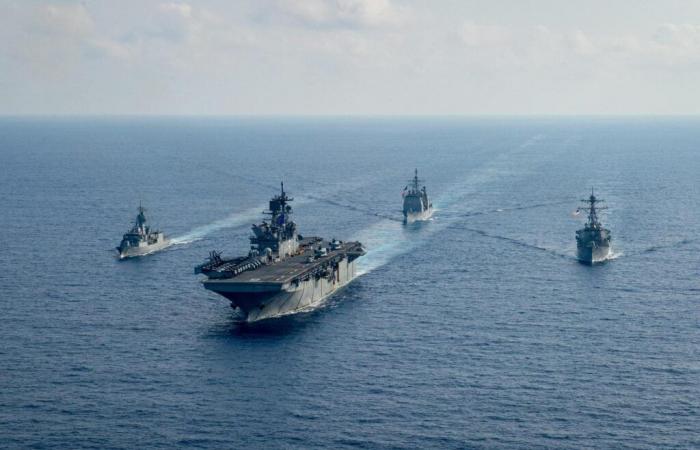EThe warship is sailing. The military navies are not immune – like the land armies and the air forces – to the global rearmament movement, which began in the middle of the 2010 decade and amplified after the start of the Russo-Ukrainian war. All countries are renewing their armada, and the French navy has entered an unprecedented phase of modernization since the 1990s, notes Pierre Eric Pommellet, CEO of Naval Group and president of the Groupement des industries de construction et activities navales (Gican), organizer from Monday 4 to Thursday 7 November, in Villepinte (Seine-Saint-Denis), Euronaval, the most important naval defense exhibition.
Industrialists, senior officers, politicians and experts will assess heavy equipment, but also the latest innovations, such as the hypervelocity anti-missile electromagnetic gun designed by the Franco-German Research Institute of Saint-Louis (Haut-Rhin) or the swarm of drones autonomous acoustic intelligence submarines from the company Arkeocean. Proof that alongside the historic market dominated by large groups, an emerging market of SMEs is developing in the hitherto closed ecosystem of the defense industry.
It has come a long way, atrophied by the Westerners' “peace dividend” policy, when the dying USSR and then the chaotic Russia of the 1990s no longer represented an existential threat in their eyes. Even during the Cold War, the military fleets concentrated in the North Atlantic did not play their overall role during the Second World War, a role that they find again today, underlines Nicolas Mazzucchi, research director at the Center for Naval Strategic Studies (CESM).
Global threat
This strategic pause led to the closure of many shipyards and a drastic reduction in fleets. The French navy has gone from 147 vessels to 80 since 1985, indicates a 2022 parliamentary report; the US Navy fell from 594 buildings to 271 between 1987 and 2015, according to the CESM, and it must entrust part of their maintenance to Japanese and South Korean shipyards. An attrition which was nevertheless accompanied by a modernization of equipment, the tonnage of an armada no longer being the only measure of its power and its effectiveness.
The pause ended in the early 2010s, when Westerners grew concerned about Beijing's opening of the new Silk Roads in 2013, naval ambitions extending beyond the China Sea and the desire to surpass Americans in 2049, year of the 100e anniversary of the People's Republic.
You have 56.44% of this article left to read. The rest is reserved for subscribers.



